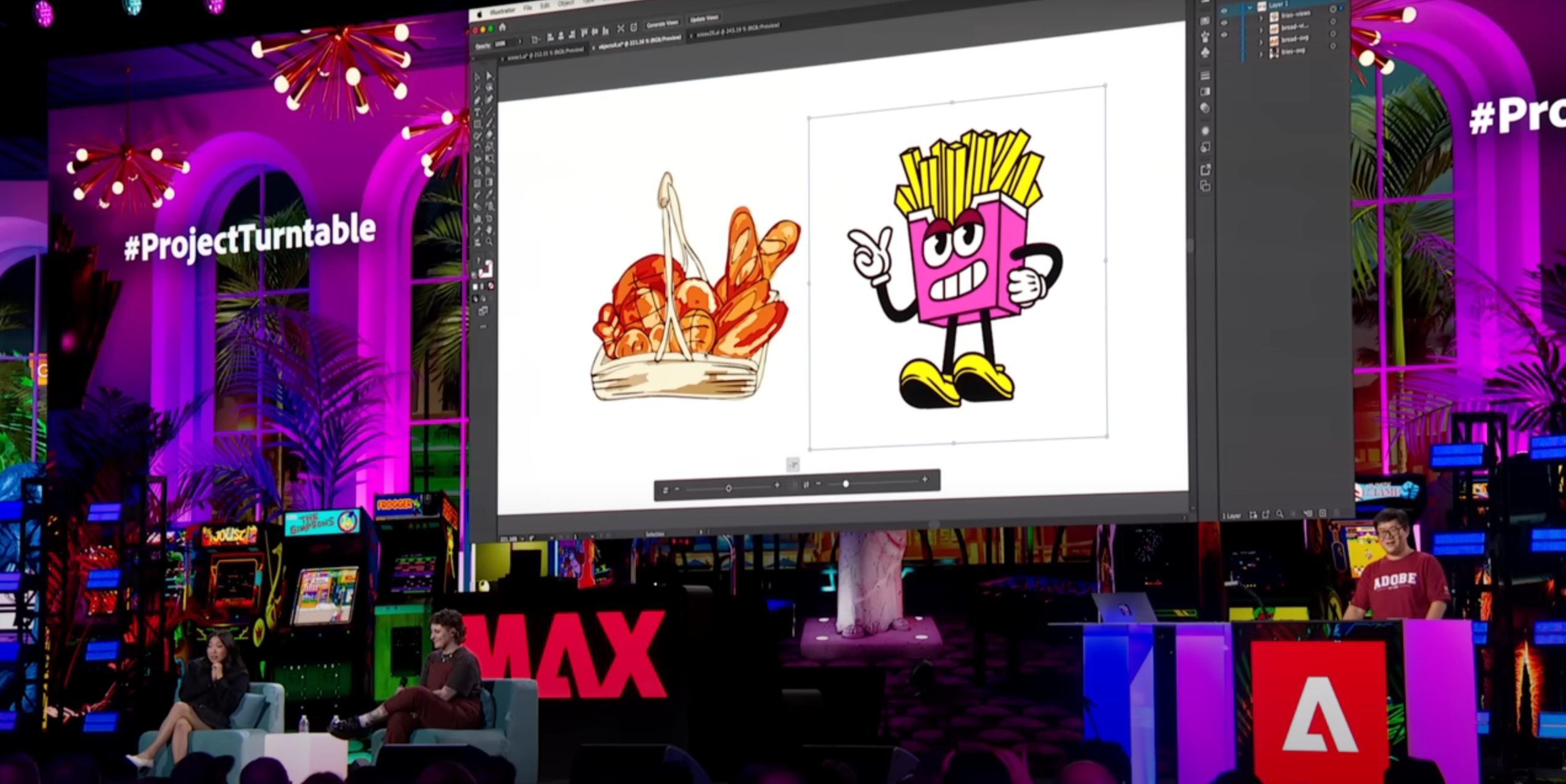“That’s wizardry”
The on-stage demo showed off rotations for a number of varied images, from largely symmetrical dragons, horses, and bats to more complex shapes like a sketch of a bread basket or a living cup of fries (complete with arms, legs, eyes, and a mouth). In each case, the machine-learning algorithm does an admirable job assuming unseen parts of the model from what’s available in the original 2D view, extrapolating a full set of legs on a side-view horse or the bottom of the Fry Man’s shoes, for instance.
Vertical rotation lets you see the bottom of Fry Man’s shoes here. Credit: Adobe
Still, we’re sure the vector models on stage were chosen to show Project Turntable in its best light. Without a public testable version, it’s hard to say how it would handle weird edge cases or drawings that don’t closely match objects in its training data (which we don’t know the extent of).
Even so, what was shown on stage has some obvious appeal for working artists. After seeing the on-stage video, Ars Creative Director Aurich Lawson exclaimed on our internal Slack, “That’s wizardry. I don’t know how well it really works—I bet not nearly as good as that demo a lot of the time—but I’m impressed.”
Project Turntable is also notable because it augments original work by human artists rather than replacing it with images created whole cloth by AI. While Project Turntable saves those artists the effort of drawing their 2D objects and characters from multiple angles, that human artist is still responsible for the overall style and look of that original work. Maintaining that human style seems to be a key point for Adobe, which points out that “even after the rotation, the vector graphics stay true to the original shape so you don’t lose any of the design’s essence.”
Adobe’s Brian Domingo told the Creative Bloq blog there’s still no guarantee that Project Turntable will ever be released commercially. Given the obvious enthusiasm of the demo crowd at the MAX conference, though, we think it’s safe to assume that Adobe will do whatever it can to get this feature ready for prime time as soon as possible.
